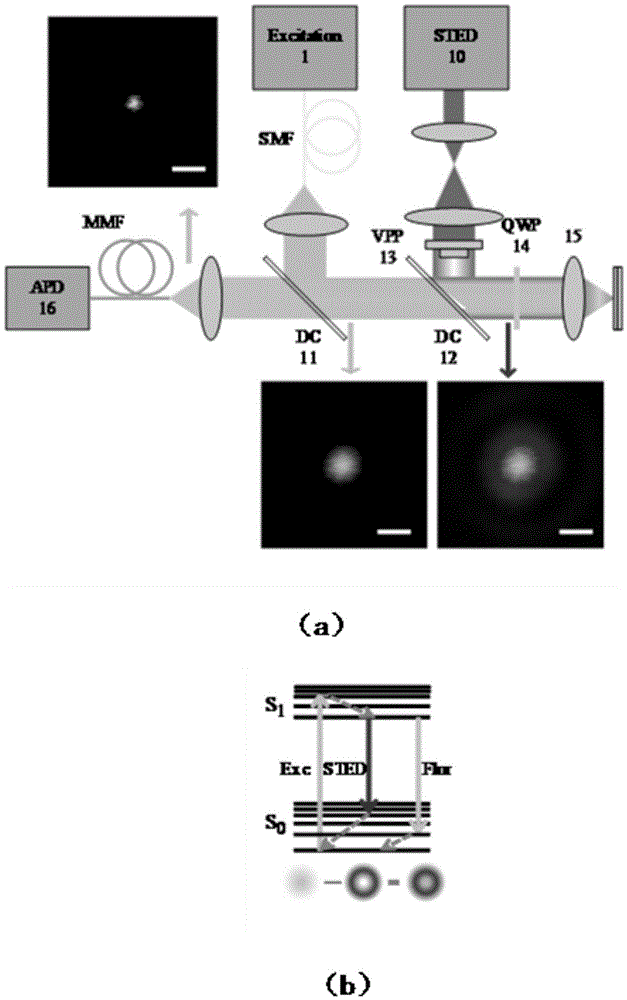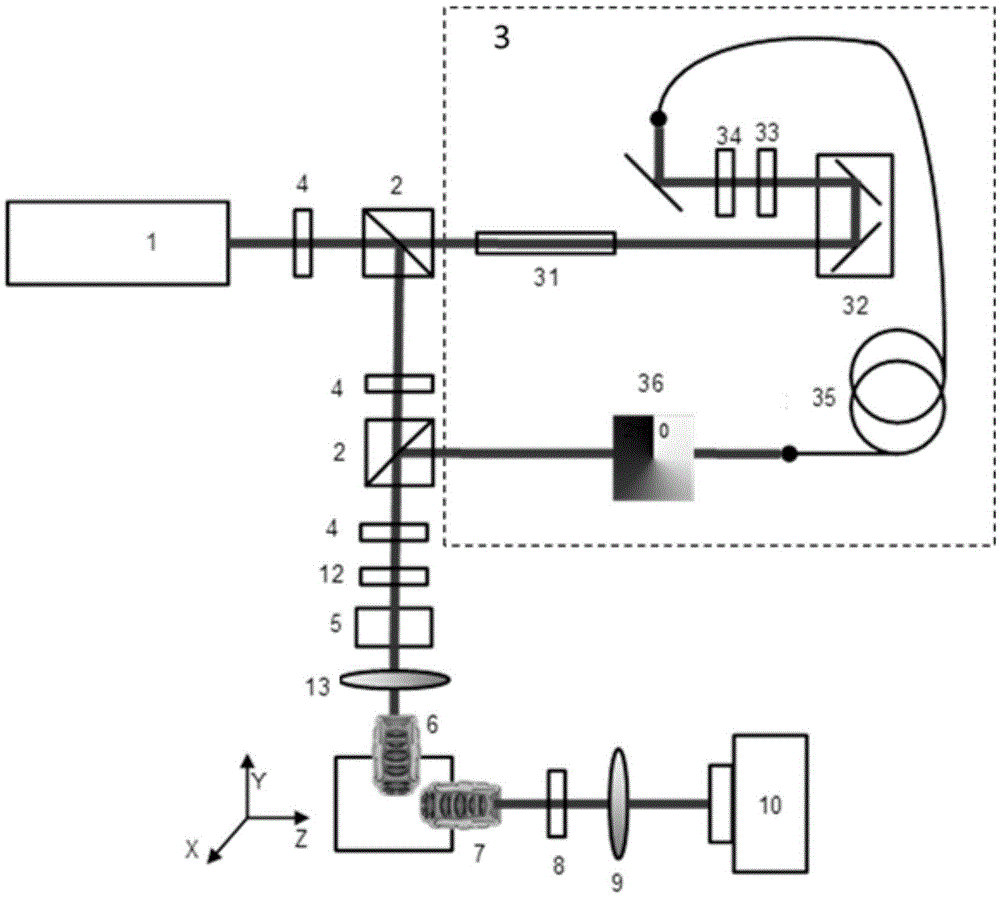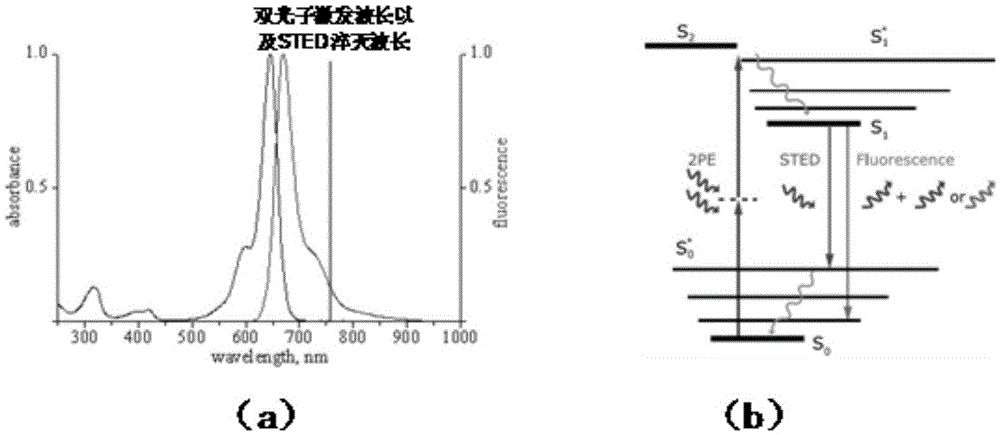Multiphoton subpulse STED-SPIM microscopic system realized by single wavelength
A microscope system, single-wavelength technology, applied in the field of biomolecular imaging, can solve the problems of small field of view, high cost, slow imaging speed, etc., to reduce economic costs, enhance imaging capabilities, and reduce costs.
- Summary
- Abstract
- Description
- Claims
- Application Information
AI Technical Summary
Benefits of technology
Problems solved by technology
Method used
Image
Examples
Embodiment Construction
[0019] The present invention will be described in detail below in conjunction with the accompanying drawings. However, it should be understood that the accompanying drawings are provided only for better understanding of the present invention, and they should not be construed as limiting the present invention.
[0020] like Figure 2-5 As shown, the single-wavelength multi-photon pulse STED-SPIM microsystem of the present invention simultaneously comprises a femtosecond single-wavelength laser 1, two light splitting devices 2, a STED light quenching system 3, three polarization adjustment devices 4, a Scanning device 5, an exciting objective lens 6, an imaging objective lens 7, a filter 8, a converging lens 9, a photosensitive element 10 or an analysis element 11 and a quarter slide 12; the STED light quenching system 3 includes A glass rod 31, a delay device (mirror combination) 32, a half-wave plate 33, a polarizer 34, a polarization-maintaining fiber 35 and a phase modulati...
PUM
 Login to View More
Login to View More Abstract
Description
Claims
Application Information
 Login to View More
Login to View More - R&D
- Intellectual Property
- Life Sciences
- Materials
- Tech Scout
- Unparalleled Data Quality
- Higher Quality Content
- 60% Fewer Hallucinations
Browse by: Latest US Patents, China's latest patents, Technical Efficacy Thesaurus, Application Domain, Technology Topic, Popular Technical Reports.
© 2025 PatSnap. All rights reserved.Legal|Privacy policy|Modern Slavery Act Transparency Statement|Sitemap|About US| Contact US: help@patsnap.com



